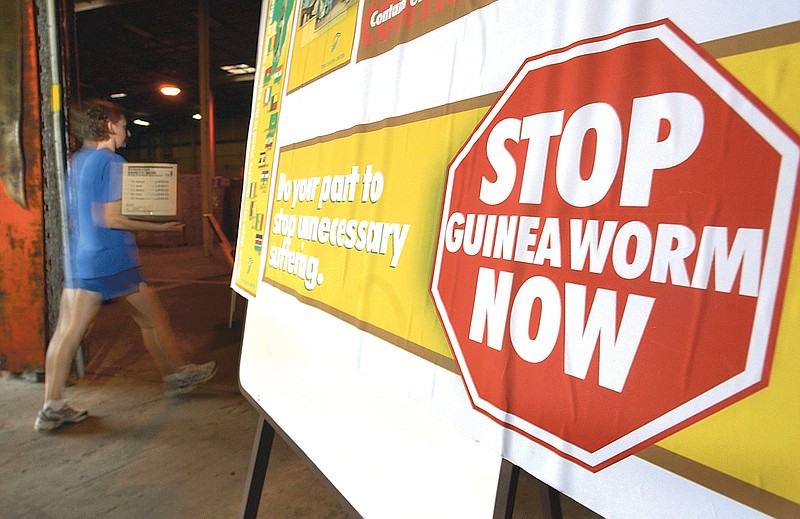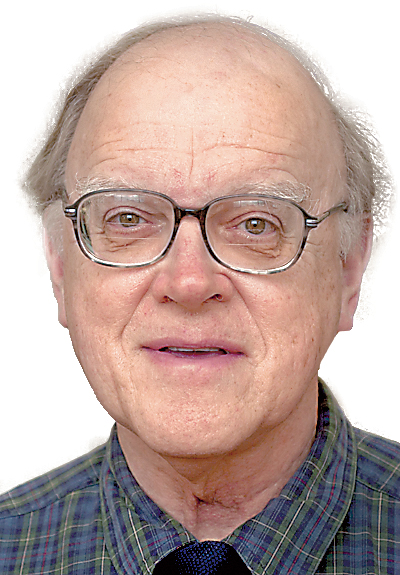Many years ago, I had my only encounter with the Guinea worm, a tropical parasite.
The young man had spent a summer working with a missionary in West Africa. More than a year following his return to the U.S., he developed a painful blister on his shoulder - from which emerged a thin, grey worm. A wise professor, who seemed to know everything, recognized the invader as a Guinea worm. Treatment consisted of gradually winding the worm around a matchstick until it could be completely withdrawn from the body. This took days to accomplish and, to this day, remains the only therapy.
The Guinea worm was first described in an ancient Egyptian papyrus dating from 1500 BC; the identical treatment was described. Larvae of the worm infect stagnant ponds. Tiny water fleas ingest the larvae, which develop further within the insects. A human who drinks from the pond in turn ingests the infected fleas.
Once within the human host, the larvae slowly develop into worms that may reach three feet in length, residing in connective tissue until they break through the skin. Intense itching leads the victim to wash the affected area in pond water into which millions of larvae are then discharged, so the cycle repeats itself endlessly.
Victims living in endemic areas had miserable lives due to ongoing, painful eruptions of the worms which developed from the only source of drinking water to which the people had access.
Guinea worm was considered a neglected, tropical disease. Its millions of victims were poor residents of remote villages in Africa and Asia. In 1986, when Atlanta's Carter Center accepted the challenge to eradicate the disease, there were more than 3.5 million sufferers concentrated in more than 20 countries. By January of this year, that number had been reduced to 126 through the focused, sustained efforts coordinated by the center.
In the near future, Guinea worm disease will join smallpox as the second infectious disease to be eradicated. This is missionary work of the highest order.
Founded in 1982 by former President Jimmy Carter and his wife, Rosalynn, in collaboration with Atlanta's Emory University, the Carter Center's motto is "Waging Peace. Fighting Disease. Building Hope." Although the center's work in promoting democratic elections and resolving conflicts grabs the most attention from the media, its work in public health has improved the lives of countless millions who are often forgotten in our busy, self-absorbed world.
Guinea worm disease is one of six tropical illnesses selected by the center to eradicate. In the absence of effective therapy, the emphasis had to be upon prevention. People living in areas where the disease was prevalent had to be taught to filter their drinking water. Simple, clean, cotton material would suffice.
Funding for the fight against the disease came from the Bill and Melinda Gates Foundation, other philanthropic organizations, governmental ministries, the president of the United Arab Emirates and other individuals and agencies. Technical expertise came from the U.S. Centers for Disease Control, the World Health Organization and the United Nations Economic and Social Council.
The demanding legwork meant searching out and visiting every village whose drinking water was infected with Guinea worm larvae. The message was simple: No unfiltered water should ever be consumed.
In his 2002 acceptance speech of the Nobel Peace Prize, Carter stated: "The bond of our common humanity is stronger than the divisiveness of our fears and prejudices. God gives us the capacity for choice. We can choose to alleviate suffering. We can work together for peace. We can make these changes - and we must."
Contact Clif Cleaveland at cleaveland1000@comcast.net.

